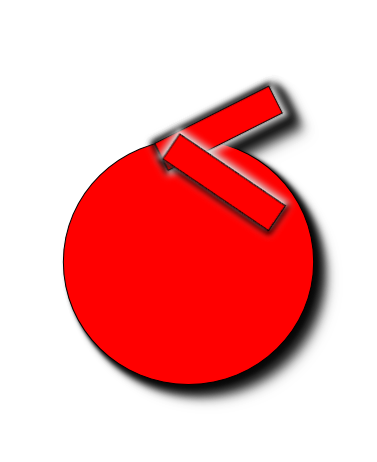stereotype (UML) on:
[Wikipedia]
[Google]
[Amazon]
A stereotype is one of three types of extensibility mechanisms in the
UML Superstructure Specification
', v2.0, p. 33, August 2005. One alternative to stereotypes, suggested by





UML Stereotype
Unified Modeling Language {{uml-stub
Unified Modeling Language
The Unified Modeling Language (UML) is a general-purpose, developmental modeling language in the field of software engineering that is intended to provide a standard way to visualize the design of a system.
The creation of UML was originally m ...
(UML), the other two being tags and constraints. They allow designers to extend the vocabulary of UML in order to create new model elements, derived from existing ones, but that have specific properties that are suitable for a particular domain or otherwise specialized usage. The nomenclature is derived from the original meaning of stereotype
In social psychology, a stereotype is a generalized belief about a particular category of people. It is an expectation that people might have about every person of a particular group. The type of expectation can vary; it can be, for example ...
, used in printing
Printing is a process for mass reproducing text and images using a master form or template. The earliest non-paper products involving printing include cylinder seals and objects such as the Cyrus Cylinder and the Cylinders of Nabonidus. The ea ...
. For example, when modeling a network you might need to have symbols for representing routers and hubs. By using stereotyped nodes you can make these things appear as primitive building blocks.
Graphically, a stereotype is rendered as a name enclosed by guillemets
Guillemets (, also , , ) are a pair of punctuation marks in the form of sideways double chevrons, and , used as quotation marks in a number of languages. In some of these languages "single" guillemets, and , are used for a quotation inside an ...
(« » or, if guillemets proper are unavailable, << >>) and placed above the name of another element. In addition or alternatively it may be indicated by a specific icon. The icon image may even replace the entire UML symbol. For instance, in a class diagram stereotypes can be used to classify method behavior such as «constructor» and «getter». Despite its appearance, «interface» is not a stereotype but a classifier.
Object Management Group
The Object Management Group (OMG) is a computer industry standardization, standards consortium. OMG Task Forces develop enterprise integration standards for a range of technologies.
Business activities
The goal of the OMG was a common portabl ...
, UML Superstructure Specification
', v2.0, p. 33, August 2005. One alternative to stereotypes, suggested by
Peter Coad
Peter Coad (born December 30, 1953) is a software entrepreneur and author of books on programming. He is notable for his role in defining what have come to be known as the UML colors, a color-coded notation chiefly useful for adding breadth and ...
in his book ''Java Modeling in Color with UML: Enterprise Components and Process'' is the use of colored archetypes
The concept of an archetype (; ) appears in areas relating to behavior, historical psychology, and literary analysis.
An archetype can be any of the following:
# a statement, pattern of behavior, prototype, "first" form, or a main model that ot ...
. The archetypes indicated by different-colored UML boxes can be used in combination with stereotypes. This added definition of meaning indicates the role that the UML object plays within the larger software system.
Stereotype attributes
From version 2.0 the previously independent tagged value is considered to be a ''stereotype attribute''. The name ''tagged value'' is still kept. Each stereotype has zero or more ''tag definitions'', and all stereotyped UML elements have the corresponding number of tagged values.UML-defined stereotypes
Become
In UML, become is akeyword
Keyword may refer to:
Computing
* Keyword (Internet search), a word or phrase typically used by bloggers or online content creator to rank a web page on a particular topic
* Index term, a term used as a keyword to documents in an information syst ...
for a specific UML stereotype, and applies to a dependency (modeled as a dashed arrow). Become shows that the source modeling element (the arrow's tail) is transformed into the target modeling element (the arrow's head), while keeping some sort of identity, even though it may have changed values, state
State may refer to:
Arts, entertainment, and media Literature
* ''State Magazine'', a monthly magazine published by the U.S. Department of State
* ''The State'' (newspaper), a daily newspaper in Columbia, South Carolina, United States
* ''Our S ...
, or even class.
While UML 2.1 uses the «become» stereotype within the specification, it does not define it.
Examples
For example, three are used in theEntity-Control-Boundary
The entity-control-boundary (ECB), or entity-boundary-control (EBC), or boundary-control-entity (BCE) is an architectural pattern used in use-case driven object-oriented software design that structures the classes composing a software accordin ...
pattern (ECB or BCE pattern) and four in the robustness diagram
The entity-control-boundary (ECB), or entity-boundary-control (EBC), or boundary-control-entity (BCE) is an architectural pattern used in use-case driven object-oriented software design that structures the classes composing a software accordin ...
(Boundary, Control, Entity and Actor).




See also
*Profile (UML) A profile in the Unified Modeling Language (UML) provides a generic extension mechanism for customizing UML models for particular domains and platforms. Extension mechanisms allow refining standard semantics in strictly additive manner, preventing ...
*Entity-control-boundary
The entity-control-boundary (ECB), or entity-boundary-control (EBC), or boundary-control-entity (BCE) is an architectural pattern used in use-case driven object-oriented software design that structures the classes composing a software accordin ...
References
External links
UML Stereotype
Unified Modeling Language {{uml-stub